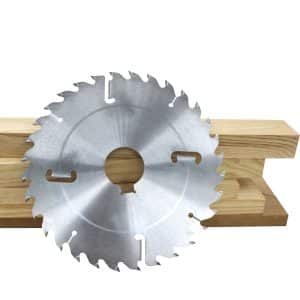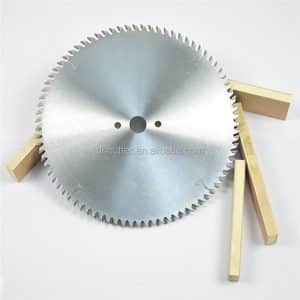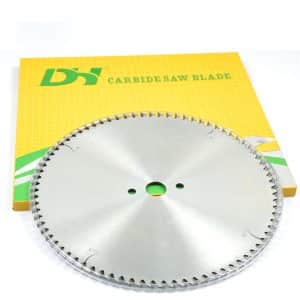Three Essential Factors for Choosing Circular Saw Blades
The art and science of woodworking requires not only skill and creativity, mais aussi les bons outils. Pour plusieurs personnes, choisir une lame de scie peut sembler écrasant, mais une compréhension plus approfondie de leur conception et de leur objectif peut simplifier le processus de sélection. Dans cet article, we will delve into the nuances of choosing the right circular saw blades for your woodworking project.
Before we delve into specific product recommendations, let’s take a moment to understand the basic principles of saw blades. The main elements of a circular saw blade include the blade plate, saw kerf, saw teeth, and saw teeth. The configuration of these elements determines the performance of the circular saw blades.
Among them, the diameter and kerf of the saw blade are particularly important.
Diamètre
Because for each mechanical device and handheld power tool, only a specific size of blade can be loaded on that device. For table saws, blades with a diameter of 254mm are generally accepted. For hand circular saws, it is usually 165mm or 190mm; for sliding table saws, blades with a diameter of 315mm or 350mm or larger are acceptable. Donc, before purchasing a new blade, you should make sure that the saw blade is suitable for your machine.
Tailler
The kerf is the groove that the saw makes in the wood after it passes through it. It can also refer to the thickness of the groove that the circular saw blade passes through. Kerf thickness affects the width of the cut, cost, power consumption, and the amount of material (bois) lost during processing.
The thicker the blade, the less likely it is to bend, and the wider the kerf will be. For this reason, heavy-duty fixed table saws usually use 3.2mm blades. This blade can easily cut high-density hardwoods due to the power provided by the blade. Table saws, scies à onglets, and radial arm saws rated under 1.1KW are usually equipped with thinner blades (about 2.4mm) for better performance power.
Donc, the next time you choose a saw blade, think more about your machine and choose a saw blade that matches your sawing machine.
In addition to considering the elements of the circular saw blade itself and how well it matches the machine, the application scenario is also very important.
Circular saw blades are widely used in woodworking, but you can’t use one saw blade to handle all types of boards, because different materials have different characteristics.
Par exemple, if you are cutting particle board. Particle board is widely using our daily life, your bed, cabinet, and door may be made with this kind of board, it is economical and practical. Particleboard is a man-made board made of various branches, small-diameter wood, fast-growing wood, sawdust, etc.. These materials need to be cut into wood chips of certain specifications, dried, mixed with glue, hardener, waterproofing agent, and pressed under certain temperature and pressure. Because the particleboard has a granular structure inside, it needs to be cut with a special saw blade, which is called a particleboard special circular saw blades.
En bref, choosing the right circular saw blades is a basic step to ensure the success of your woodworking project. Consider the diameter of the saw blade itself, the cut, the usage scenario and other factors.
Service personnalisé de lames de scie circulaire à pointe de carbure disponible



